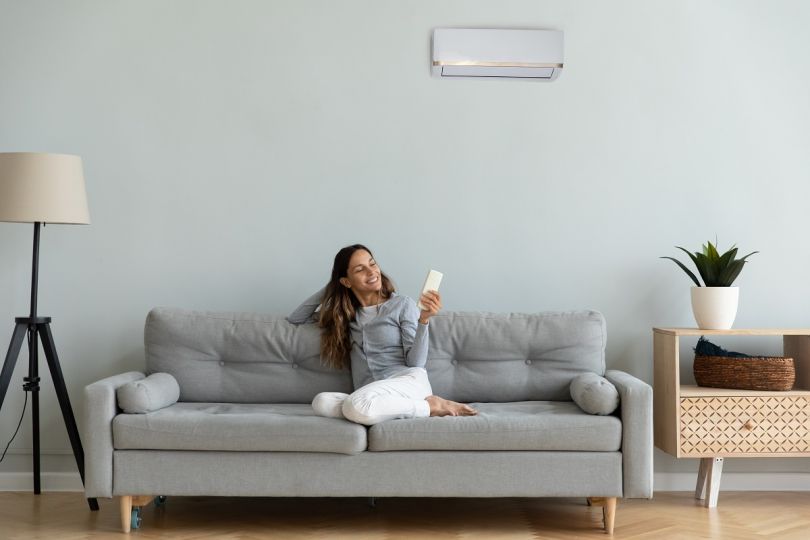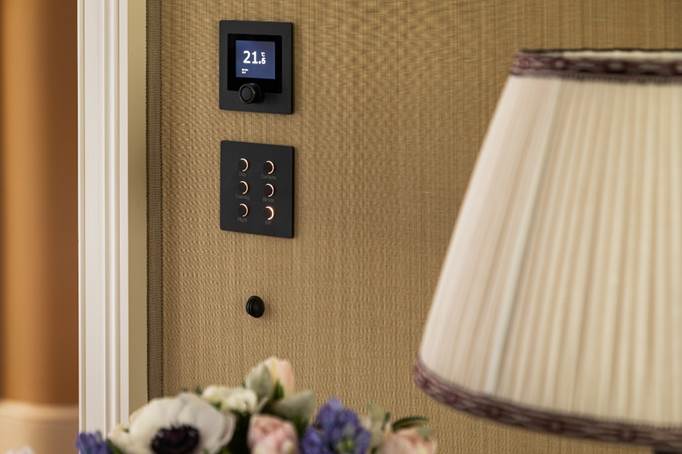
Hot Property: why air conditioning is growing in popularity in UK homes

You would be right if you felt that it’s been unusually hot this year. According to the Met Office, June 2025 was the hottest on record for England – a milestone that’s quickly becoming an annual tradition. With each passing year, summer seems to bring longer and more intense heatwaves, and as a result, air conditioning is fast becoming a necessity for many homeowners.
While it may feel like a new phenomenon, the demand for air conditioning in UK homes has in fact been gathering pace for a few years. “People often think of air conditioning as a modern-day indulgence,” says Ellie Sanders, Associate Director in our Notting Hill office. “But this trend has been brewing since lockdown. We had an incredibly hot summer during that time, and it’s been the same story every year since. The difference now is that rather than just a couple of sticky days, we’re seeing six-week stretches of heat. It’s made air conditioning a worthy investment for many.”
Matthew Henderson, Residential Research, agrees: “Whilst summer average temperatures still hover around the early to mid-20s, our Housing Futures survey found that one in ten home movers already say they’d require air conditioning in their next home to support their wellbeing. In cities, where heat tends to linger due to dense buildings and limited natural airflow, that figure climbs to 16%.”
From penthouses to period flats
Nowhere is demand more visible than in prime urban homes - and particularly in new developments. Schemes such as The OWO Residences by Raffles and River Park Tower offer integrated air conditioning as standard, rather than as an added bonus. Interestingly, it’s a feature which is proving particularly popular with international buyers who see it as a non-negotiable.
This sentiment is reinforced by Barry Smith at air conditioning specialists, Calibre Climate, who highlights American buyers as a major driver of air-conditioning in UK homes. “The number of Americans looking to buy here has increased by 19% in the first half of this year. When you consider that around 90% of homes in the US have air conditioning – compared to less than 5% here – it’s easy to see how this is contributing to the steady rise in both searches for homes with climate control, and enquiries into installation.”
For period conversions - especially those in Conservation Areas or on historic estates - installing air conditioning often involves an extra layer of approvals. The most common type of system uses an external condenser unit, and these vary in size depending on the system they serve. While planning consent isn’t always required, it’s often needed in apartment blocks, Listed buildings, or homes with restrictive covenants. In rare cases where permission can’t be secured, water-cooled systems with no external unit may be considered. However, they require considerably more internal space, generate more noise, lower the water pressure, and are generally less reliable. They also rely on a constant supply of mains cold water, which is discharged straight to drain - making them far less sustainable and significantly more expensive to run. Installation costs are higher too. For all these reasons, they’re only ever recommended once every other route has been fully exhausted.
In terms of where demand for air-conditioning is stemming from, our Notting Hill office says it’s heavily focused on top-floor apartments, especially in buildings with low ceiling heights, and homes with lots of glass. “More than half of our buyers for properties over £2M will mention air conditioning when talking about what their next home needs,” adds Ellie Sanders.

Credit: Calibre Climate, Studio Jo Cowen, Element Construction, Joanna Plant Interiors
Keeping cool in the country
Away from the city, homeowners are perhaps more tactical in their approach to air conditioning. Rather than cooling every room in the house, they often focus on reducing the temperature in high-use spaces or the rooms that are most affected by sun exposure. This is perhaps unsurprising when you consider the larger square footage that needs accounting for.
“Open-plan kitchens - particularly if they’re south-facing - are among the most common spaces to be cooled,” says Oli Custance Baker, head of the National Country House Department. “The other is the principal bedroom. Heat undoubtedly impacts our sleep, so being able to take the temperature down a notch or two makes the world of difference.”
Homeowners’ decisions are often informed by practical considerations: Which rooms are used most during the day? Where gets the most sun? What spaces are the most expensive to cool? It’s about both comfort and efficiency.
Barry Smith at Calibre Climate says that whilst their business was historically focused on London, they’re now seeing an increase in enquiries from the Home Counties, and coastal hotspots like Norfolk.
A generational divide
According to our Housing Futures survey, younger buyers are leading the charge for air conditioning, which is a sign that demand is likely to increase. “It may not be long until air conditioning joins the ranks of central heating and double glazing as a retrofit ‘must-have’,” says Matt Henderson.
Charlie Longe, Managing Director of Builtain, a property refurbishment and maintenance firm, agrees: “I would go as far as to say that almost every large refurbishment now involves air conditioning. Whereas ten years ago, it was very rare.”
One concern that often comes up around air conditioning is its environmental impact - but in reality, the sustainability of a system largely comes down to how it’s powered and how well it’s designed. “If a system is running on electricity generated by solar panels, for example, it can be highly sustainable,” explains Barry Smith. “Good system design plays a big part too - for instance, smart controls can help minimise energy use by scaling back how much air is being pushed out when the home is unoccupied or during cooler times of day.”
The government recently announced that they are exploring the idea of expanding the Boiler Upgrade Scheme to include air-to-air heat pumps. If approved, homeowners could receive a financial contribution to offset installation costs, making the technology more accessible and increasing the use of green technology to supply the required energy.
With the Met Office recently reporting that temperatures exceeding 40°C are now over 20 times more likely than in the 1960s, it’s undeniable that the UK’s climate is changing. So, if those hot days are here to stay, will it not be long until almost every home comes with climate control as standard?
To help demystify the process, we sat down with experts to answer some of your top questions – read the Q&A here.
